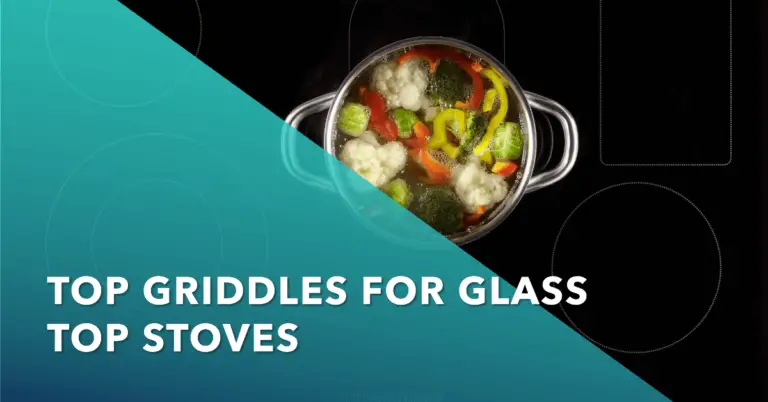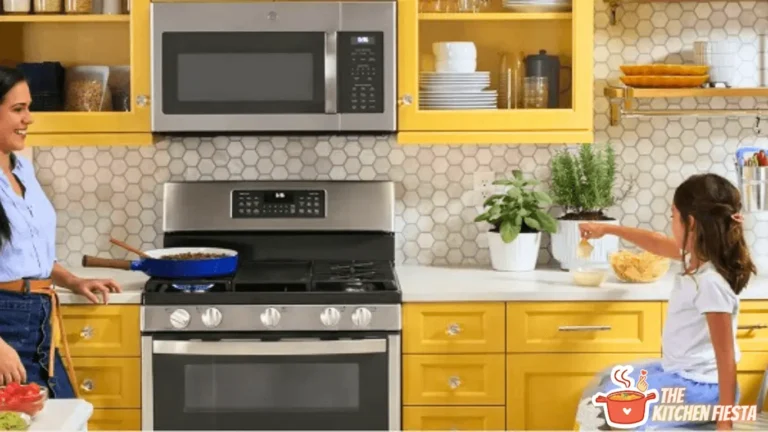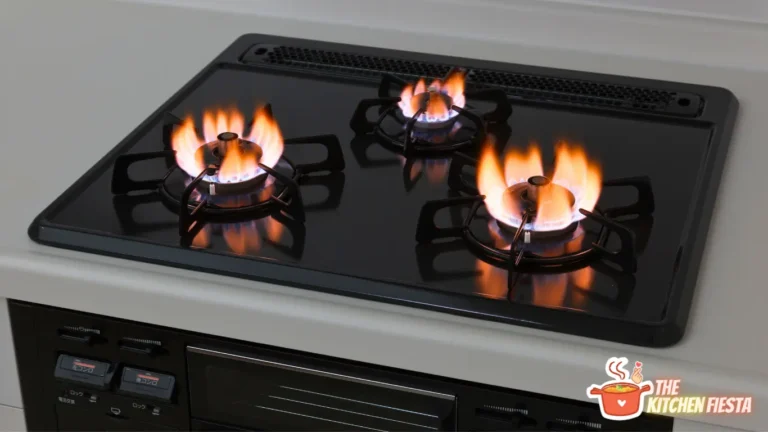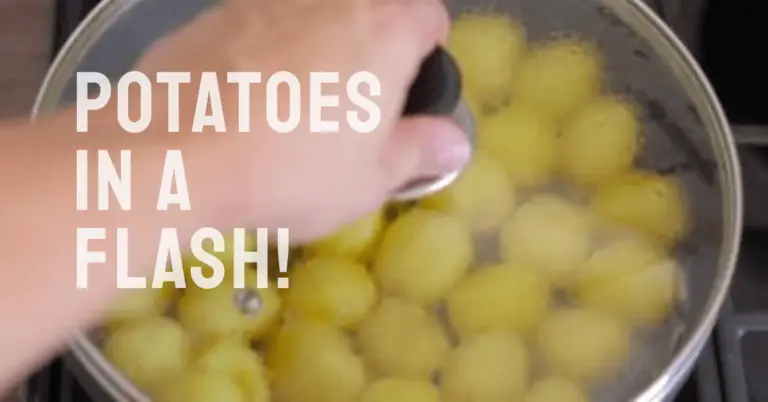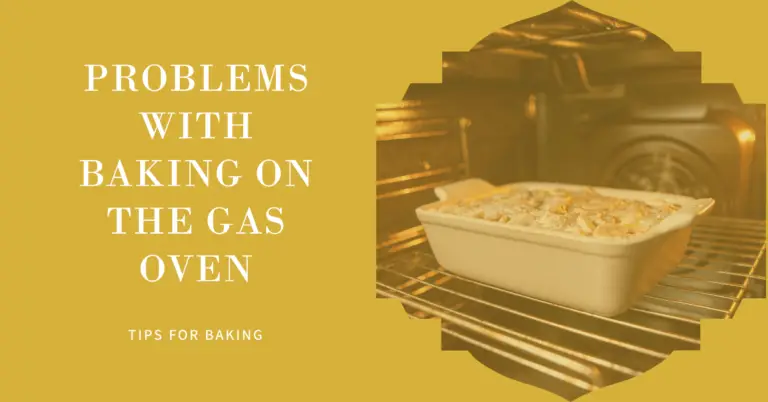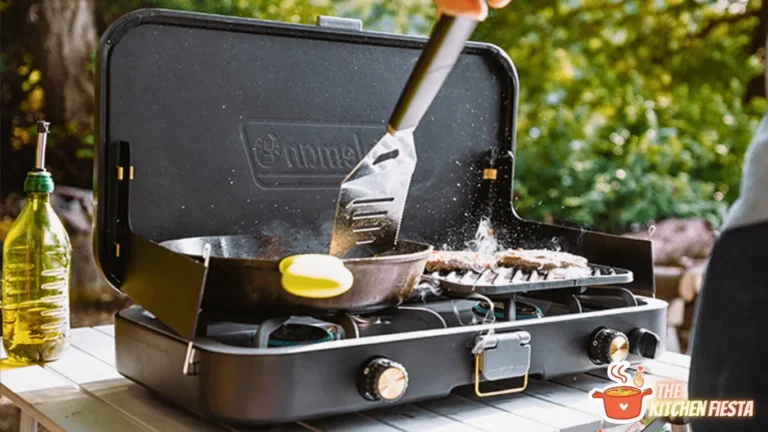What Is Medium Heat On A Stove? A Guide to Stove Temperature Settings
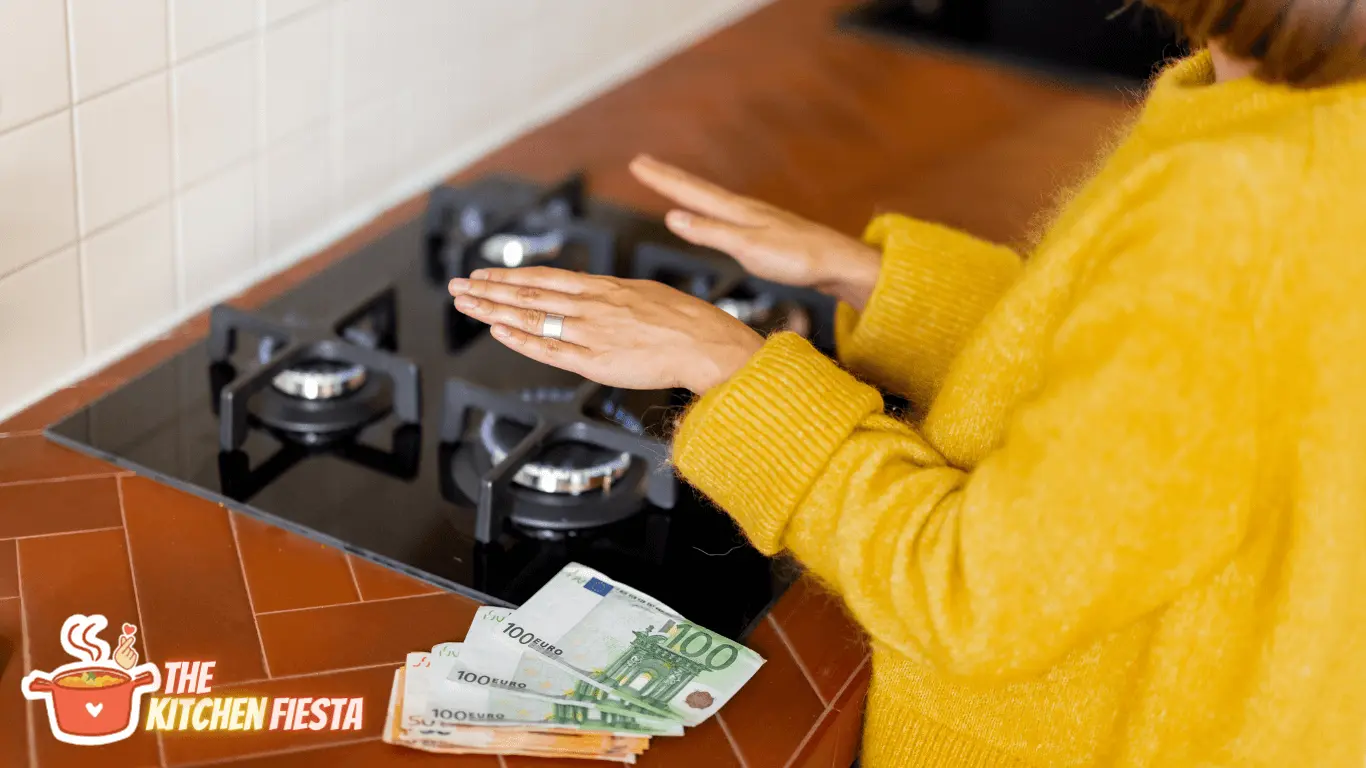
Cooking can sometimes feel like a game of chance. You follow a recipe to the letter, but still end up with burnt edges or undercooked centers. Stove settings like “medium heat” leave much open to interpretation. So what temperature is actually medium heat on a stove?
In general, medium heat on a stove ranges from 300-375°F (150-190°C). However, the exact temperature varies significantly depending on your stove type, cookware, and environment. The key is learning how to adjust.
In this detailed guide, we’ll cover:
- The heat settings on different stove types
- Recommended temperature ranges for true medium heat
- How to tell if your stove is at medium heat
- What cooking techniques and foods use medium heat best
- Adjusting recipes for your stove’s version of medium
- Signs your stove isn’t at the right heat
- Best practices for cooking on medium
Let’s turn up the heat on the nuances of medium stove temperatures!
Stove Types and Their Heat Settings
The first step to decoding medium heat is understanding your stove. There are four main types of stoves, each with their own systems for controlling heat levels:
Electric Stoves
Electric stoves heat up coils or smooth glass tops to transfer heat to pans. Settings are typically numbers, ranging from 1 (low) to 6 or higher (high). Medium heat is often around 4-5.
However, the actual temperature can vary greatly depending on the stove’s wattage, age, and build quality. Newer or more powerful electric stoves may run 50-100°F hotter on the same setting.
Gas Stoves
Gas stoves produce a flame that heats pans directly. The size of the flame determines the heat. Settings range from low/simmer to high. Medium is usually the mid-point for an even flame size.
But again, it depends on the stove’s BTUs, condition, and flame spread under the pan. More powerful gas stoves heat up quicker. Old gas stoves with uneven flames can create hotspots.
Induction Stoves
Induction stoves use electromagnets to induce heat directly in ferrous pots and pans. Controls use number settings like electric models.
Medium is around 5-6 on most models. Temperature precision can be more consistent with induction, but cookware quality also plays a role.
Glass-ceramic Stoves
These flat-top stoves have electric coils or gas burners underneath a smooth glass-ceramic surface. They often use numbers like 1 to 9 for settings.
Medium heat is typically around 4 to 6. But again, the actual temperature can differ from the number setting based on the stove’s inner workings and pan used.
Now that we’ve covered the range of stove options and their settings, let’s look at target temperature ranges for true medium heat.
Recommended Temperature Ranges for Medium Heat
Referring to “medium heat” generally assumes a temperature range between 300-375°F (150-190°C). However, variations in stove types and models means your medium setting may produce temperatures outside that.
Here are some factors that influence your stove’s actual medium heat temperature:
- Stove make and model – Higher output stoves generate more heat at the same setting
- Stove age – Older stoves may heat unevenly or run hot and cold
- Electric vs gas – Electric typically heats more evenly than gas
- Cookware used – Materials like cast iron retain heat better than aluminum
- Environment – Higher altitudes and hot humid days can alter heating
While 300-375°F is the general target, your stove’s true medium heat may be 25-50° higher or lower. The key is learning how your stove model works specifically.
Next, let’s go over methods for gauging whether your stove is reaching a true medium heat.
How to Gauge If Your Stove Is at Medium Heat?
With so many variables at play, how can you be sure your stove is running at a true medium temperature range? Here are some methods to test and gauge your stove’s heat:
Use an Oven Thermometer
Oven or meat thermometers placed on the stove grate can help give you the actual temperature. Heat the stove for 5 minutes on medium, then observe the thermometer temperature.
Aim for a range around 325-350°F (160-175°C) for the typical medium heat sweet spot. Adjust your burner higher or lower as needed.
Do a Hand Test
After heating the stove for a few minutes, hold your hand an inch over the surface. You should feel heat, but taking your hand away after 2-3 seconds. 7-10 seconds likely indicates medium-low heat.
Test with Oil or Water
Add a drop of oil or sprinkle of water to the pan. It should sizzle gently. Aggressive bubbling means the heat is higher than medium. No sound or slight bubbling means it’s lower than medium.
Look for Visual Cues
On electric stoves, an orange/medium glow from the coils often aligns with medium heat. With gas, steady, medium-sized blue flames are ideal.
Cook a Test Food
Try sautéing a medium-dense food like cubed potatoes. They should brown over 3-5 minutes without burning. Faster browning indicates higher heat. Slower means lower heat.
Pay attention to how foods cook at different settings. Their reaction will tell you if the heat needs adjusting.
Now that we know how to gauge the heat, what techniques and dishes benefit most from true medium?
What is Medium Heat Best Used for Cooking?

Here are some of the best uses for stove-top cooking at medium heat:
- Sautéing – Cooks food fast to sear and brown, but gentle enough to avoid burning. Great for aromatics, meats, veggies.
- Simmering – Maintains a gentle bubbling action that breaks down foods over time. Ideal for sauces, stews, soups.
- Pan-frying – Provides heat to cook through thinner foods like eggs, pancakes, fish.
- Braising – Allows food to brown before adding liquid to braise meats/veggies into tender perfection.
In general, medium heat strikes a balance between searing/browning and delicate simmering. Dishes that need a balance of both do well with medium.
For example, medium heat can be ideal for cooking:
- Meats – chicken breasts, pork chops, steaks
- Veggies – onions, peppers, greens, carrots
- Eggs
- Pancakes and other baked goods
- Soups, stews, sauces
- Rice and grains
Next, let’s go over how to adjust recipes when your stove’s “medium” doesn’t align with the ideal.
Adjusting Recipes for Your Stove’s Medium Heat
Recipes give stove temperatures that assume a typical medium heat sweet spot. But your stove may run hotter or cooler. Here are some tips for adjusting:
If your medium heat runs hot:
- Use a lower setting like 4 instead of 5 for medium
- Reduce overall cook times by 2-3 minutes
- Use more heat-safe cookware like stainless steel or cast iron
- Watch closely to reduce burning
If your medium heat runs cooler:
- Use a higher setting like 6 instead of 5 for medium
- Increase cook times by 2-3 minutes as needed
- Use cookware that retains heat well, like heavy bottomed pots
- Cover pans more to retain heat
- Be prepared to increase heat if food cooks too slowly
Finish dishes by taste-testing frequently. And make notes so you learn how much to adjust recipes on your stove.
Let’s now go over signs that your stove isn’t reaching medium heat properly.
Signs Your Stove is Not at Medium Heat
Here are some indicators that your stove setting for “medium” is off from the ideal medium heat range:
- Food burns or scorches easily
- Boiling water bubbles vigorously
- Oil instantly smokes or spatters
- Meats brown immediately without searing
- Eggs cook too fast and turn rubbery
- Pancakes burn on the bottom before cooking through
- Soups boil rapidly when simmering is needed
- Food takes much longer than recipe states to cook
Basically, if food is overcooking or undercooking significantly compared to a recipe, your stove’s heat level needs adjustment.
Try turning the heat setting down or up by 1-2 increments. Give your stove 5-10 minutes to adjust, then retest with a food like oil or cubed potato. Eventually you’ll dial in your perfect medium.
Finally, let’s go over some best practices when cooking on medium heat.
Best Practices for Cooking with Medium Heat
To get the most consistent results when cooking on medium stove-top heat, keep these tips in mind:
- Preheat your pan for 2-3 minutes before adding oil or food.
- Use heavier cookware like stainless steel or cast iron to better conduct steady heat.
- Keep a close eye on food and stir occasionally if sautéing or frying.
- Adjust the heat down if food starts browning too quickly.
- Add extra cooking time if food seems undercooked compared to a recipe.
- Use a thermometer periodically to check your stove’s heat.
- Clean your stove burners regularly so they heat evenly and efficiently.
- Minimize drafts from fans, AC vents, or opening oven doors that can disrupt stove heating.
- Note any adjustments needed to recipes when cooking on your stove.
Proper medium heat on a stove is very personalized. So get to know your appliance’s quirks through trial and error. In time, you’ll nail delicious meals with steady, even medium heat.
Key Takeaways on Medium Heat
- Medium stove-top heat generally ranges from 300-375°F (150-190°C).
- The actual temperature for “medium” varies based on your stove type, age, cookware, and environment.
- Check your stove’s heat with a thermometer or test foods like oil and potato.
- Adjust recipes up or down if your stove runs hotter or cooler than expected.
- Look for visual cues like coil color or flame size to gauge medium heat.
- Medium heat strikes an ideal balance for cooking methods like sautéing, braising, simmering.
- Monitor foods closely and adjust heat levels up or down as needed.
- Preheating pans, using good cookware, and minimizing drafts will improve consistency.
Understanding your stove’s personal medium heat sweet spot takes some trial and error. But mastering medium heat will give you delicious, consistent cooking results. Now you have the knowledge to better interpret stove settings and recipes. Happy sautéing, simmering, and frying your way to more flavorful dishes!

